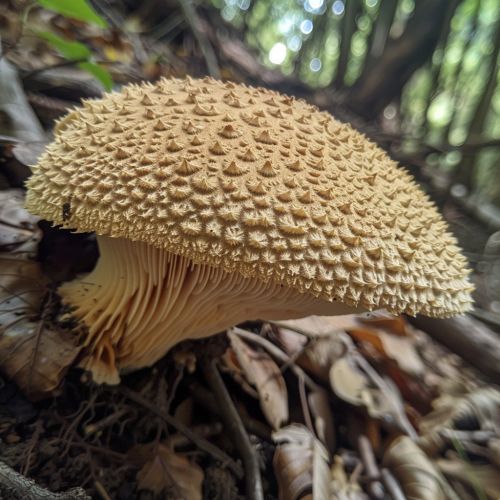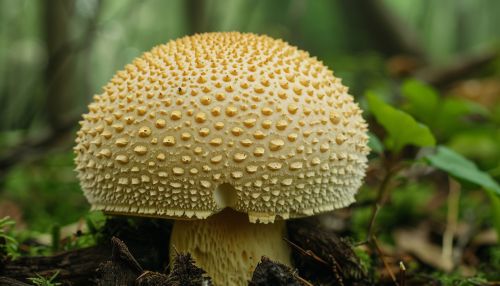Lepiota
Introduction
Lepiota is a genus of gilled mushrooms in the family Agaricaceae. This genus contains both edible and highly toxic species, making accurate identification crucial for foragers. The name Lepiota is derived from the Greek words "lepis" meaning scale and "ous" meaning ear, referring to the scaly appearance of the cap in many species. Lepiota mushrooms are commonly found in woodlands, grasslands, and gardens, and they play a significant role in the ecosystem as decomposers of organic matter.


Taxonomy and Classification
The genus Lepiota was first described by the French mycologist Lucien Quélet in 1872. It belongs to the order Agaricales, which includes many of the most familiar types of mushrooms. The classification of Lepiota has undergone significant changes over the years, with molecular phylogenetic studies revealing that many species previously included in Lepiota belong to other genera such as Leucoagaricus and Leucocoprinus.
Subgenera and Sections
Lepiota is divided into several subgenera and sections based on morphological characteristics such as spore color, cap texture, and gill attachment. The primary subgenera include:
- Lepiota subgen. Lepiota - Characterized by white spores and a scaly cap.
- Lepiota subgen. Echinoderma - Known for its rough, spiny cap surface.
- Lepiota subgen. Cystolepiota - Features small, delicate mushrooms with a smooth cap.
Morphology
Lepiota mushrooms exhibit a wide range of morphological features, but they generally share some common characteristics:
Cap
The cap, or pileus, of Lepiota mushrooms is typically convex to flat and often features a central umbo. The surface is usually dry and covered with scales, which can be white, brown, or reddish. The cap diameter ranges from 1 cm to 15 cm, depending on the species.
Gills
The gills, or lamellae, are free from the stem and are usually white to cream-colored. They are closely spaced and can be either adnexed or free.
Stem
The stem, or stipe, is cylindrical and often has a ring, or annulus, which is a remnant of the partial veil that covers the gills during development. The stem surface can be smooth or fibrous and is often white or pale in color.
Spores
Lepiota spores are typically white to cream-colored and are released from the gills. They are ellipsoid to ovoid in shape and have a smooth surface. Spore prints are an essential tool for identifying Lepiota species.
Habitat and Distribution
Lepiota species are widely distributed across temperate and tropical regions. They are commonly found in:
- Woodlands and forests, particularly in leaf litter and decaying wood.
- Grasslands and meadows, often in association with grasses and herbs.
- Gardens and urban areas, where they may grow on compost or mulch.
Lepiota mushrooms are saprotrophic, meaning they obtain nutrients by decomposing organic matter. This ecological role makes them important contributors to nutrient cycling in their habitats.
Toxicity and Edibility
The genus Lepiota includes both edible and highly toxic species. Accurate identification is crucial, as some species contain potent toxins that can cause severe illness or death.
Toxic Species
Several Lepiota species contain amatoxins, a group of highly toxic compounds that inhibit RNA polymerase II, leading to cell death. Notable toxic species include:
- Lepiota brunneoincarnata - Known for its brownish-red cap and deadly toxicity.
- Lepiota helveola - Features a reddish-brown cap and contains lethal amatoxins.
Symptoms of amatoxin poisoning include nausea, vomiting, diarrhea, and liver failure. Immediate medical attention is required if ingestion is suspected.
Edible Species
While some Lepiota species are considered edible, they are generally not recommended for consumption due to the difficulty in distinguishing them from toxic species. Edible species include:
- Lepiota procera - Also known as the Parasol Mushroom, it is highly regarded for its culinary value.
- Lepiota rhacodes - Known as the Shaggy Parasol, it is edible but can cause gastrointestinal upset in some individuals.
Cultivation and Uses
Lepiota mushrooms are not commonly cultivated due to the challenges in distinguishing edible species from toxic ones. However, some species, such as Lepiota procera, are occasionally grown for culinary purposes.
In traditional medicine, certain Lepiota species have been used for their purported medicinal properties, although scientific evidence supporting these uses is limited.
Conservation
The conservation status of Lepiota species varies widely. Some species are common and widespread, while others are rare and threatened by habitat loss and environmental changes. Conservation efforts focus on preserving natural habitats and promoting sustainable foraging practices.
